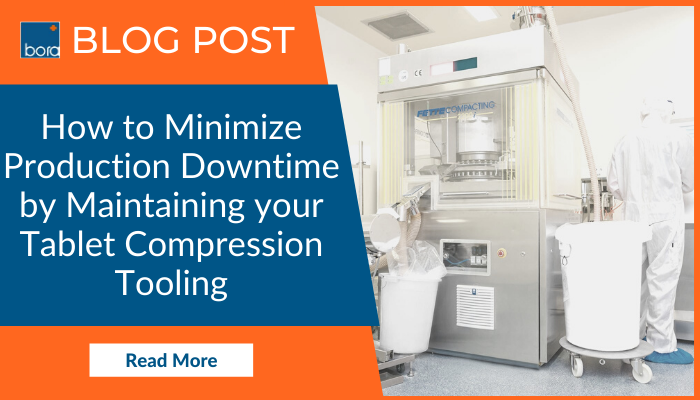We here at Bora are often asked by our clients what the best approach to maintaining tablet compression tooling to maximize the life of the tooling and optimize performance during production so that downtime can be minimized. Optimizing and maintaining tablet compression tooling surely brings challenges. Poorly performing tools are a challenge all pharmaceutical manufacturers have to conquer. We’re constantly looking to overcome hurdles with proper maintenance and improvement to prolong compressing tooling lifespan and to ensure optimum tablet quality. The two major challenges are:
- Reduce common compression issues during production
- Eliminate tooling downtime
Three Simplest and Most Effective Ways of Maintaining Tablet Compression Tooling
1. Perform Visual Inspections of Tablet Compression Tooling Regularly
After each campaign of tablet compression activity, perform a visual inspection of all the tooling punches and dies with a digital microscope and/or magnifier to determine if any repair work is required. Below in Fig. 1 and Fig. 2 are illustrations of a recent inspection we performed on a set of compression tooling. The most common issues are J-hooks, burred edges, and broken fixed key, tip, and headwear.
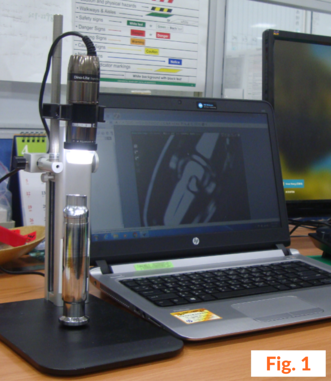
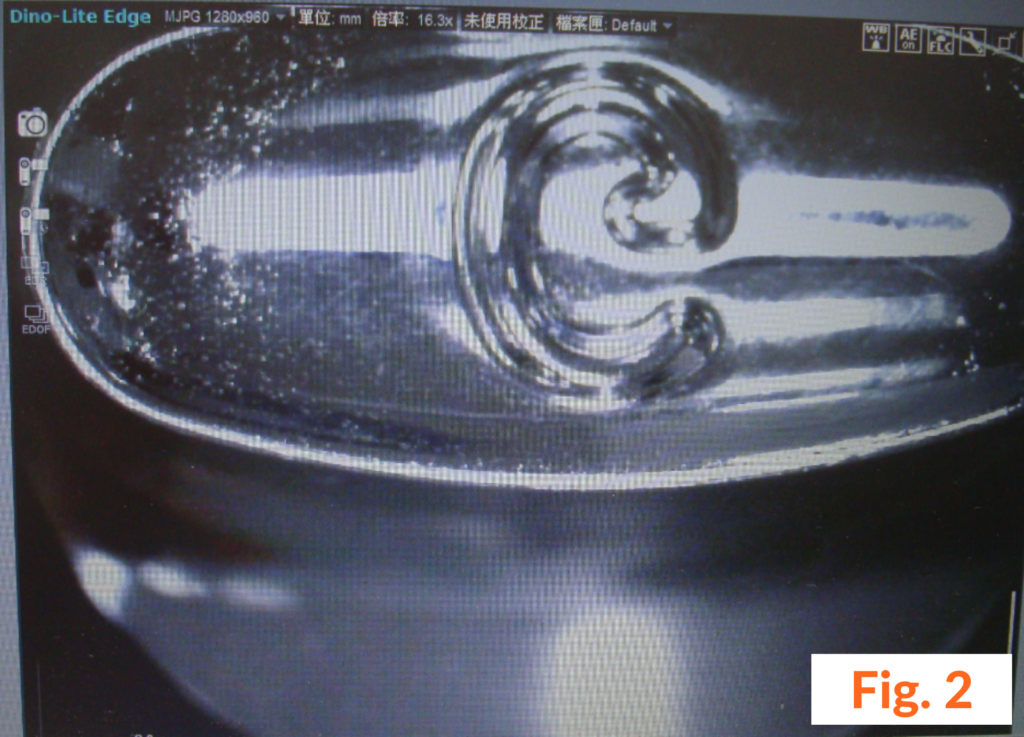
2. Working Length Measurement
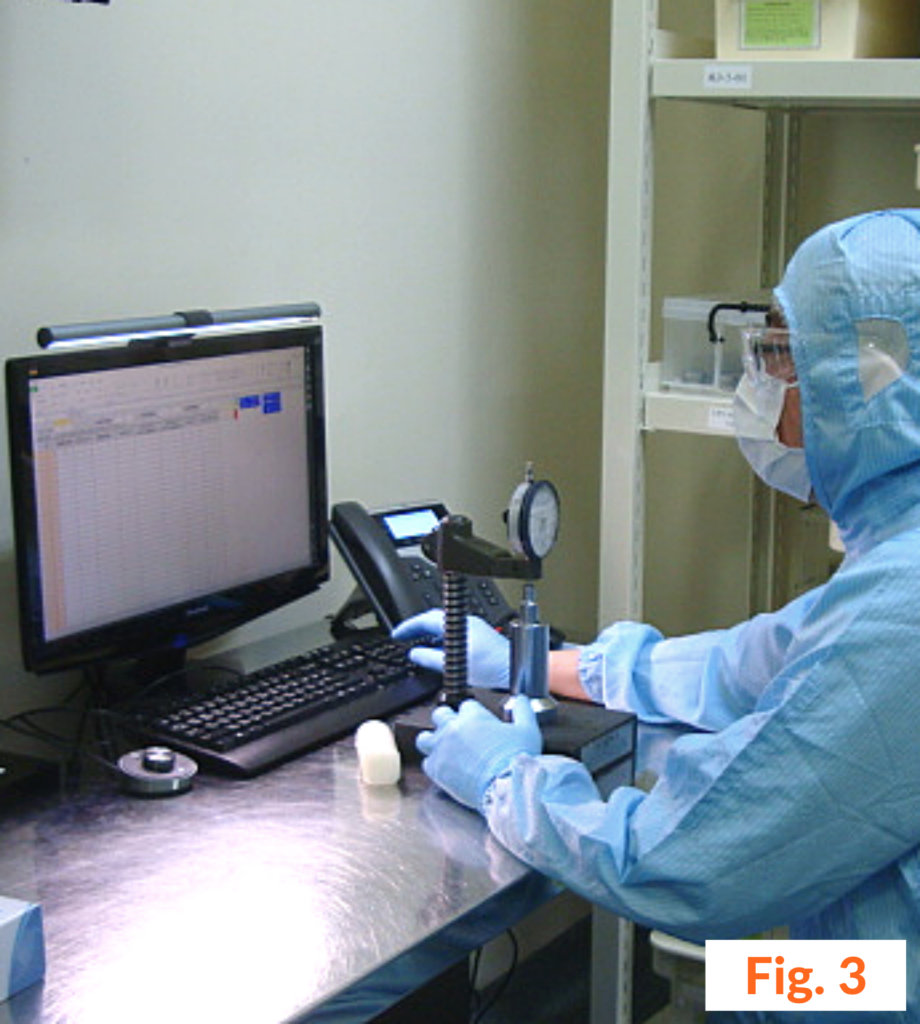
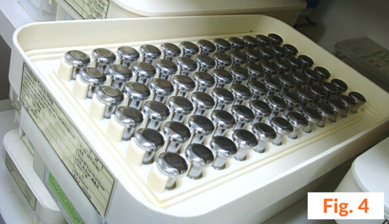
Comprehend punch working length variation is critical; it consistently affects of tablet hardness, weight, and thickness. This dimension is the most important and we should record the trend and recommend that the T.I.R (Total Indicator Runout) should not exceed ±0.025mm according to TSM (Tableting Specification Manual). Fig. 3 is a picture of working length measurements using a dial gauge.
3. Proper Storage Can Extend Compression Tooling Life
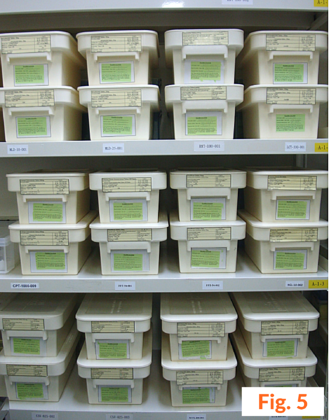
Dedicated and FDA-approved tooling storage boxes should be used for all compression tooling. Refer to Fig. 4 for an example of a typical storage box used. Store the tooling in a separate tooling room with controlled atmosphere. The storage conditions should have a temperature range of (22 ±3°C) and relative humidity (RH) of <60%.
Proper tooling storage and maintenance will extend tooling life. If tooling is stored properly in controlled conditions and in dedicated storage boxes (Fig. 5), this will ensure that expensive, high-quality compression tooling can make production smoother and improve tooling quality and stability. It is also important that tooling is handled correctly to minimize wear. Remember to regularly lubricate the tooling during storage. Better tooling maintenance will also affect the quality of the product and ensure higher tablet production yields. Improper compression tooling storage and maintenance will, conversely, shorten the life of the tooling, cause more downtime in production, and reduce tablet yields.
Four Maintenance Tips to Extend the Life of Your Tablet Compression Tooling
Improving the quality of tooling, performing regular maintenance and repairs, and extending the service life of tooling are important considerations for enterprises to reduce costs and increase efficiency. In this regard, many companies have also developed a tooling warranty management mechanism to ensure that the tooling is in an optimal production state.
Here are four easy tips we would like to share for extending the life of your tooling:
- Clean the upper and lower surfaces of the tooling before installing the tooling to ensure that the tooling mounting surface and the press table are not crushed and maintain the parallelism of the upper and lower mounting surfaces of the tooling in production.
- After the tooling is installed, open the tooling and clean all parts of the tooling, especially the guide mechanism. For the surface part tooling, the profile should be cleaned to ensure the quality of the part.
- Lubricate the sliding parts of the tooling, apply grease, and check the tooling for damage and safety of the parts.
- Professional tooling personnel should use a torque wrench to confirm tooling screw and use a GO/NO GO gauge to confirm tooling has no deformation. This is a vital step to ensure your compression tooling does not damage the tablet press turret which can accidentally introduce metal filings in compressed tablets.
Also, after production is completed, a comprehensive inspection, measurement, and recording of the tooling should be carried out, and the tooling should be thoroughly wiped to ensure the cleanliness and accuracy of the tooling.
By following these 4 simple steps including regular lubrication of the tooling during storage and managing the compression tooling parts to identify any undue wear in the tooling, you can reduce the need for having to replace worn tooling. Click here to watch a compression tooling polishing guide from Natoli Engineering.
Final Thoughts for Optimizing and Maintaining Tablet Compression Tooling
To improve the use of your compression tooling, your tablet manufacturer should follow Standard Operating Procedures (SOPs) based on the tooling storage management recommendations above.
Lubricate upper and lower punch bodies with a food-grade lubricant before installation (Fig. 6 and Fig. 7) and with trained professionals to complete the installation work tooling.
Implementing a cleaning procedure for tooling is an important but often overlooked first step to cost reduction. Dirty tools can cause tableting and product quality-related problems, including sticking and picking. Keeping tools clean can decrease premature tool wear and allow lubrication to be more effective as well as reduce the possibility of product cross-contamination.
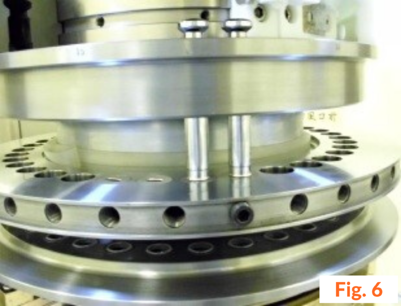
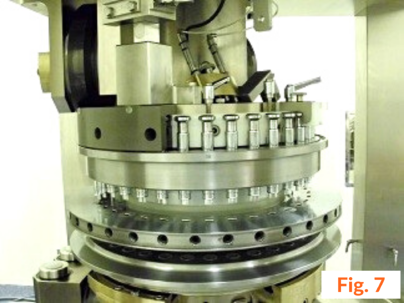
Well-maintained tooling can shorten tooling assembly and adjustment time, reduce production failures, make the production run smoothly, ensure product quality, and reduce enterprise operating costs and fixed asset investment. When the next production cycle begins, the enterprise can successfully produce products of qualified quality.
For those of you that are working with a Contract Manufacturer, you should insist on seeing their SOP on Tooling Management. Remember, tooling is a purchase that you have made and improper use and storage by your Contract Manufacturer costs you additional money!
In conclusion, for enterprises in the current fierce competitive manufacturing marketplace, effective introduction and use of a tooling management system to ensure tooling maintenance and performance can enhance producing good quality, consistent tablet products. This helps to reduce overall product costs and enhance market competitiveness.
